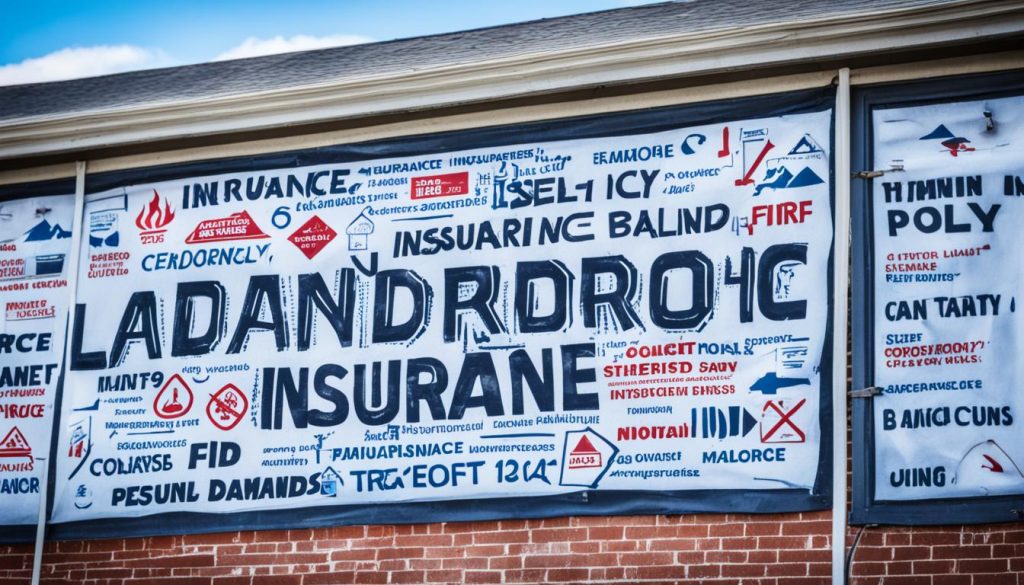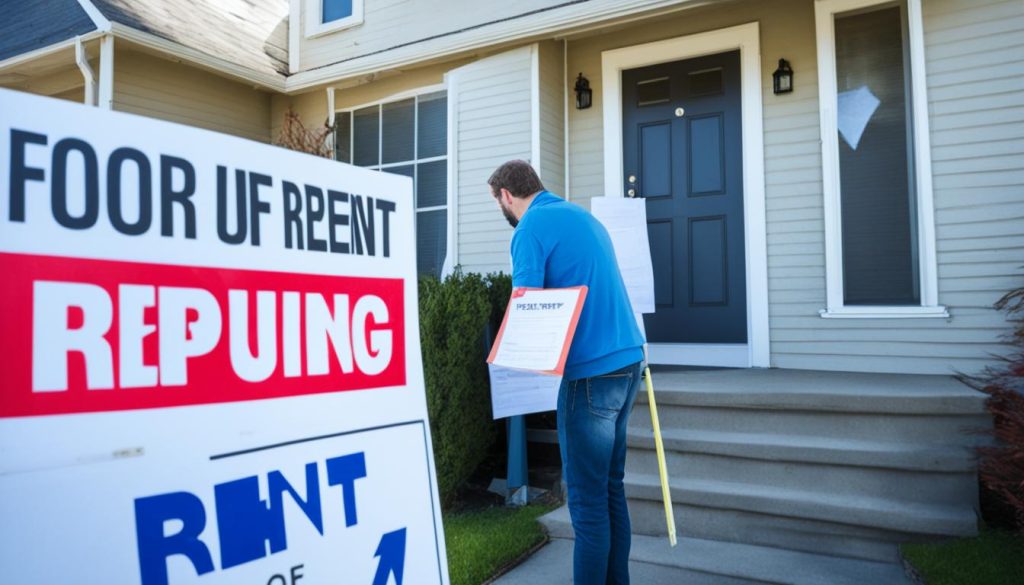Landlord insurance covers the risks related to your buy-to-let property and rental activity. The core covers usually include landlord buildings insurance, landlord contents insurance, and landlord liability insurance. You can also add other covers like loss of rent, tenant default, accidental damage, and more depending on your needs.
Understanding Landlord Insurance
Landlord insurance is a specialised form of property insurance that covers the risks associated with renting out a property. It provides protection for the building, your contents, and your legal liabilities as a landlord.
Definition of Landlord Insurance
Landlord insurance definition refers to a type of insurance policy that is designed to protect landlords from the unique risks they face when renting out a property. This includes coverage for the physical structure of the building, the contents within it, and any legal liabilities that may arise from the rental activity.
Importance of Landlord Insurance
Having landlord insurance is important for several reasons. It can help protect your investment property from unexpected events like fires, floods, or tenant-caused damage. It can also provide liability coverage in case a tenant or visitor is injured on your property. Furthermore, many mortgage lenders require landlords to have adequate insurance in place before approving a buy-to-let mortgage.
Types of Landlord Insurance Policies
There are different types of landlord insurance available to meet the diverse needs of property investors. The most common types include buildings insurance, contents insurance, and property owners’ liability insurance. Landlords may also consider adding optional covers such as loss of rent, accidental damage, or tenant default protection.
| Type of Landlord Insurance | Coverage |
|---|---|
| Buildings Insurance | Covers the cost of repairing or rebuilding the physical structure of the rental property in the event of damage from events like fires, floods, or storms. |
| Contents Insurance | Protects the landlord’s belongings and furnishings within the rental property, such as white goods, furniture, and carpets. |
| Property Owners’ Liability Insurance | Provides coverage for legal liabilities if a tenant or visitor is injured on the rental property and decides to take legal action against the landlord. |
| Loss of Rent Cover | Reimburses landlords for rental income lost if the property becomes uninhabitable due to an insured event, such as a fire or flood. |
| Tenant Default Insurance | Covers the rent payments if a tenant stops paying rent or abandons the property. |
| Accidental Damage Cover | Protects the landlord’s property and contents from unintentional damage caused by tenants. |

Core Covers of Landlord Insurance
As a landlord, securing the right insurance coverage is crucial to protecting your investment and managing the risks associated with renting out a property. Among the core covers of landlord insurance are landlord buildings insurance, landlord contents insurance, and landlord liability insurance.
Buildings Insurance
Landlord buildings insurance covers the cost of repairing or rebuilding your rental property if it’s damaged by events like fire, flood, storm, or vandalism. This can include the structure, fixtures, and fittings of the building, ensuring your investment is protected in the event of unexpected disasters.
Contents Insurance
Landlord contents insurance protects the items you provide for your tenants, such as appliances, furniture, and other furnishings. In the event of damage or theft, this cover can help you replace these items, keeping your rental property well-equipped and attractive to potential tenants.
Property Owners’ Liability Insurance
Landlord liability insurance safeguards you against claims made by third parties, including your tenants, for injuries or property damage that occur on your rental premises. This cover can help protect you from costly legal battles and ensure your financial security as a landlord.

What Does Landlord Insurance Cover UK?
Beyond the core covers of buildings, contents, and liability insurance, landlord insurance can also provide valuable protection for your rental property and rental income. Let’s explore some additional covers that may be beneficial for UK landlords.
Loss of Rent Cover
Landlord insurance can provide loss of rent cover if your tenants have to move out of your property temporarily due to an insured event, such as a fire or flood. This cover can help reimburse you for the rental income you lose during the time your property is uninhabitable. This can be especially important if you rely on that rental income to cover your mortgage and other expenses.
Accidental Damage Cover
Accidents can happen, and your tenants may accidentally cause damage to your rental property. Landlord accidental damage cover can protect you from the cost of repairing this type of damage, ensuring you don’t have to dip into your own funds. This cover can give you peace of mind knowing you’re protected against unexpected incidents that could otherwise be costly.
Tenant Default Insurance
Unfortunately, sometimes tenants may fail to pay their rent on time or at all. Landlord tenant default insurance can provide a safeguard in these situations, helping to cover the rental payments you would have received if the tenant had paid as agreed. This cover can be particularly valuable if you rely on the rental income to service your mortgage or other financial obligations.

Additional Landlord Insurance Covers
While the core covers of landlord insurance are essential, there are also several optional add-ons that can provide additional protection for your rental property and business. These include:
Home Emergency Cover
Landlord home emergency cover can provide rapid assistance if there’s an unexpected issue at your rental property, such as a boiler breakdown or plumbing emergency. This cover can arrange for a contractor to attend and cover the cost of labour and some materials to resolve the problem, helping you get your property back up and running quickly.
Legal Expenses Cover
Landlord legal expenses insurance can cover the legal costs associated with disputes that may arise during the course of your rental business. This could include defending against claims of landlord malicious damage cover, pursuing rent arrears, or representing you in a property repossession case.
Malicious Damage by Tenants Cover
Landlord malicious damage cover protects you financially if your rental property is intentionally damaged by your tenants. This can include coverage for repairs to fixtures, fittings, and the building itself, as well as any related clean-up costs. Having this additional cover can provide peace of mind and help you avoid significant out-of-pocket expenses.
By considering these landlord home emergency cover, landlord legal expenses insurance, and landlord malicious damage cover options, you can build a comprehensive landlord insurance policy that addresses the unique risks and challenges of being a landlord in the UK.
Exclusions and Limitations
While landlord insurance in the UK provides comprehensive coverage, it’s important to be aware of certain exclusions and limitations. These typically include:
Wear and Tear
Landlord insurance policies often exclude damage caused by normal wear and tear to the rental property. This means that gradual deterioration over time, such as faded paintwork or a leaky tap, will not be covered. As a landlord, you’ll need to budget for regular maintenance and repairs to keep your property in good condition.
Intentional Damage by Tenants
Damage caused by tenants’ intentional actions, like vandalism or malicious destruction of the property, may not be covered by your landlord insurance. This emphasises the importance of thorough tenant screening and building a good relationship with your occupants to minimise the risk of such incidents.
Unoccupied Property Restrictions
If your rental property becomes unoccupied for an extended period, your landlord insurance policy may have specific restrictions or limitations. This could include reduced cover or the need to inform your insurer. It’s crucial to understand the terms around unoccupied properties to ensure you maintain adequate protection.

By familiarising yourself with these exclusions and limitations, you can take proactive steps to manage risks and ensure your landlord insurance provides the coverage you need to protect your investment.
Conclusion
In summary, landlord insurance in the UK provides comprehensive coverage to protect landlords from the various risks associated with renting out a property. The core components typically include buildings insurance, contents insurance, and liability insurance, which safeguard the physical structure, your belongings, and your legal obligations as a landlord.
Moreover, you can customise your landlord insurance policy by adding optional covers like loss of rent, accidental damage, and tenant default protection. These supplementary covers can offer additional peace of mind and financial security in the event of unexpected circumstances affecting your rental property.
By understanding the summary of landlord insurance coverage uk and selecting the right policy for your needs, you can ensure your rental business is well-protected and mitigate the unique risks faced by landlords in the UK. This comprehensive coverage can provide the foundation for a successful and profitable rental venture.
FAQ
What is loss of rent cover?
Landlord insurance can provide loss of rent cover if your tenants have to move out of your property temporarily due to an insured event, such as a fire or flood. This cover can help reimburse you for the rental income you lose during the time your property is uninhabitable.
What is home emergency cover?
Home emergency cover can provide assistance if there’s a sudden, unexpected issue at your rental property, such as a boiler breakdown or plumbing emergency. It can arrange for a contractor to attend and cover the cost of labour and some materials to resolve the problem.
Does landlord insurance cover wear and tear?
Landlord insurance policies typically exclude damage caused by normal wear and tear to your rental property. This means gradual deterioration over time, such as faded paintwork or a leaky tap, won’t be covered. You’ll need to budget for regular maintenance and repairs.






